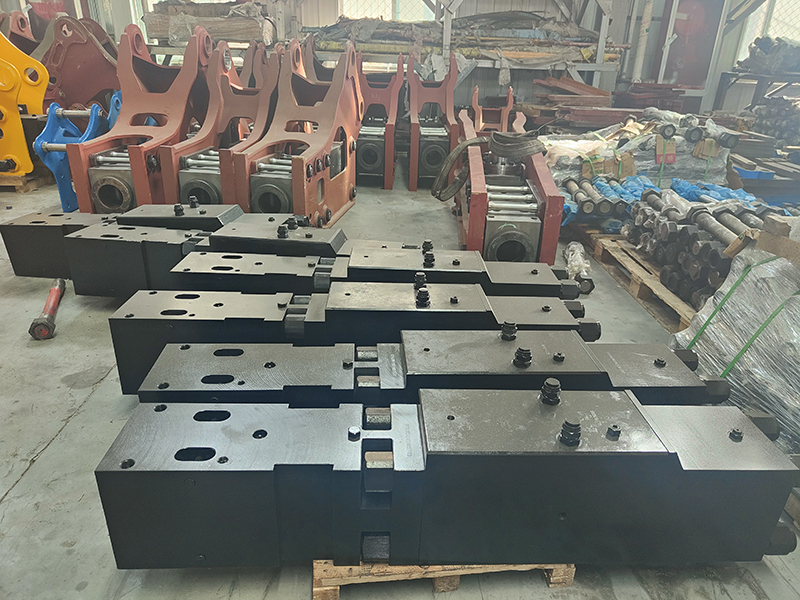Product
News
- Soosan SB121 Hydraulic Breaker for Chile – Precision Manufacturing from a Full‑Chain Chinese Factory
- High‑Performance Mini Excavator Breaker Hammer — Compact Power for Efficient Demolition and Rock Breaking
- Inside Hanyun’s Production of the SB40 Hydraulic Breaker – Precision Engineering from Raw Steel to Final Assembly
- Zhengzhou Hanyun Hydraulic Breaker — Furukawa HB30G Assembly Precision & Special Offer for Egypt Customer
- Backhoe Demolition 30 Ton Excavator Top Side Box Type Rock Hammer Hydraulic Breakers for Excavator
- Furukawa HB20G Manufactured by Hanyun: High‑Quality Hydraulic Breaker Ready for Shipment to Egypt
contacts
Contacts:Jacky Zhang
Phone:+8618937103255
Email:hanyunpsq@gmail.com
Address:No. 167, Xuchang Road, Shangjie District, Zhengzhou City
News
What are the causes of hydraulic breaker pressure leakage?
Hydraulic breaker pressure leakage can stem from various factors, ranging from wear and tear to maintenance oversights. Understanding these root causes is crucial for effectively troubleshooting and addressing pressure leakage issues. Here are some common reasons behind hydraulic breaker pressure leakage:
-
Seal Damage: One of the primary causes of pressure leakage in hydraulic breakers is damage to seals. Seals play a vital role in maintaining hydraulic system integrity by preventing fluid leakage. Wear and tear, exposure to high pressures, temperature variations, or contaminants can lead to seal deterioration and subsequent leakage.
-
Worn Components: Over time, components within the hydraulic breaker, such as pistons, cylinders, valves, and fittings, can wear out due to repeated use and stress. This wear can create gaps or cracks through which hydraulic fluid can escape, causing pressure leakage.
-
Loose Connections: Improperly tightened or loose connections between hydraulic hoses, fittings, or components can lead to pressure leaks. Vibrations during operation can exacerbate this issue, causing connections to loosen over time and allowing hydraulic fluid to escape.
-
Contaminated Hydraulic Fluid: Contaminants such as dirt, debris, or metal particles in the hydraulic fluid can damage seals, pistons, and other components, leading to pressure leakage. Regularly monitoring and maintaining the cleanliness of the hydraulic fluid is essential to prevent contamination-related leaks.

Hydraulic breaker cylinder
-
High Operating Temperatures: Excessive heat generated during prolonged operation can degrade seal materials and weaken components, increasing the likelihood of pressure leakage. Overheating can also cause thermal expansion, affecting the fit of components and potentially causing leaks.
-
Improper Maintenance: Inadequate or irregular maintenance practices, such as neglecting seal replacements, failing to lubricate components, or overlooking worn parts, can contribute to pressure leakage issues. Regular maintenance and inspection schedules are essential for identifying and addressing potential leakage sources.
-
Seal Material Compatibility: Using incorrect or incompatible seal materials that are not designed to withstand the hydraulic fluid type, pressure levels, or operating conditions can result in premature seal failure and pressure leakage. Ensuring the use of appropriate seal materials is crucial for preventing leaks.
-
Impact or Physical Damage: External factors such as impacts, rough handling, or accidental damage to the hydraulic breaker can cause structural deformations, cracks, or punctures that compromise the integrity of the hydraulic system, leading to pressure leakage.
By addressing these potential causes of hydraulic breaker pressure leakage through proactive maintenance, timely repairs, proper component selection, and adherence to operational guidelines, operators can mitigate issues and maintain the efficiency and functionality of hydraulic systems. Regular inspection and maintenance are key to preventing and resolving pressure leakage problems effectively.











